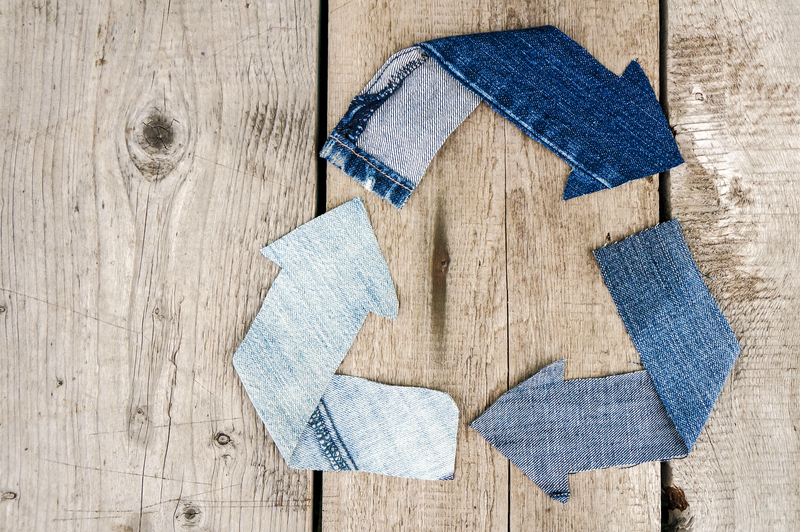Clever Solutions for Handling PPE Waste Without Risk
The use of Personal Protective Equipment (PPE) has increased dramatically in recent years, particularly due to the COVID-19 pandemic. While PPE such as masks, gloves, gowns, and face shields play a vital role in protecting individuals and communities from infectious diseases, they also pose a significant challenge once their life span has expired. Disposing of PPE waste without risk to health, safety, and the environment requires clever, innovative solutions. In this article, we will explore comprehensive, risk-free methods and strategies for handling and managing PPE waste responsibly and sustainably.
Understanding the Challenges of PPE Waste
The surge in PPE usage led to an equally staggering increase in PPE waste worldwide. Unfortunately, improper disposal methods can endanger public health, harm wildlife, and pollute the environment. Before discussing solutions, it is essential to understand the unique challenges associated with proper PPE waste handling.
Types of PPE Waste
- Single-use masks and respirators
- Nitrile, latex, and vinyl gloves
- Protective gowns and coveralls
- Face shields and goggles
- Shoe coverings and caps
Each type of PPE waste requires tailored handling and disposal methods. Masks and gloves, for example, are often composed of plastics like polypropylene, which are slow to decompose and can release microplastics into the environment.
Risks of Improper PPE Disposal
- Risk of spreading infectious diseases through contaminated materials
- Marine and terrestrial pollution due to non-biodegradable plastics
- Blockage of sewage and drainage systems
- Threat to animal health (entanglement, ingestion)
- Burden on landfill sites and waste management infrastructure

Key Principles for PPE Waste Management
To ensure safe, risk-free handling of PPE waste, several guiding principles should be followed:
- Segregation of waste at source
- Proper containment and labeling
- Hygienic and hazard-free transport of waste
- Environmentally responsible treatment and disposal
- Promoting alternatives and reusability where feasible
Innovative and Clever Solutions for Handling PPE Waste
1. Source Segregation: The First Line of Defense
The most effective method to handle PPE waste without risk is proper segregation at the source. Separate bins for PPE waste in healthcare facilities, public places, and households help reduce contamination and facilitate downstream processing.
- Designated PPE waste bins with clear signage
- Color-coded bin systems (e.g., red for infectious PPE)
- Touchless bins to reduce spread of pathogens
2. Secure Containment and Packaging
Once collected, PPE waste must be securely contained to minimize risk to waste handlers and the public. Double-bagging and leak-proof containers are commonly recommended practices. Additionally, using biodegradable or recyclable liners can help address environmental concerns associated with plastic bag use.
- Use of sealed, puncture-resistant bags
- Biohazard labels for contaminated materials
- Tamper-proof packaging for high-risk waste
3. On-Site Decontamination
A clever approach to reducing risk is on-site decontamination. This process utilizes accessible technologies to neutralize pathogens before waste is transported off-site.
- Autoclaving: Steam sterilization is highly effective and widely used in healthcare settings for decontaminating used PPE.
- Microwave-based sterilization units provide a compact, energy-efficient alternative for small-scale facilities.
- UV-C irradiation: Ultraviolet disinfection equipment can be deployed to sterilize PPE items before disposal, reducing the risk of infection.
Decontaminated PPE waste can be safely handled by waste workers and may be eligible for recycling or further processing, depending on local guidelines.
4. Environmentally-Friendly Disposal Methods
Diversion of PPE waste from landfills is a major priority. Innovative environmental solutions are transforming how used PPE is managed:
-
Thermal treatment (incineration with energy recovery):
- Properly equipped plants with modern emission controls convert contaminated waste to energy.
- Helps reduce overall waste volume and generates electricity.
-
Pyrolysis:
- High-temperature, oxygen-free processing breaks down plastics into usable fuels and chemicals.
- Emerging technology for converting PPE waste into useful energy resources.
-
Chemical recycling:
- Advanced plants can chemically recycle PPE plastics back into monomers, enabling circular production cycles.
-
Innovative bioremediation:
- Certain fungi and bacteria can degrade specific PPE materials, aiding in sustainable waste treatment.
5. Recycling PPE Waste: Turning Problems Into Resources
Though most PPE is designed for single-use, pioneering companies and research groups have developed methods to recycle these items effectively, without risk:
- Mechanical recycling of polypropylene masks into building materials like tiles, bricks, and insulation panels.
- Innovative processing transforms face shields into plastic pellets for new products.
- Collaborations between medical centers and recycling firms to collect, disinfect, and reprocess PPE components.
While recycling is not universally available due to contamination concerns, ongoing innovation promises to make this solution more scalable and accessible in the future.
6. Promoting and Using Reusable PPE Alternatives
An upstream solution to PPE waste is the adoption of reusable and washable protective equipment wherever possible.
- Cloth face masks can be laundered and reused, reducing the need for disposable equivalents.
- Reusable gowns and coveralls for healthcare and industrial workers, designed for durability and multiple wash cycles.
By encouraging the use of reusable products, organizations can significantly cut down on single-use PPE waste.
7. Decentralized and Mobile Waste Processing Units
Deploying mobile PPE waste treatment units to clinics, airports, and high-risk zones offers significant advantages:
- Reduces transport risk associated with centralized waste handling.
- Portable autoclaves and incinerators enable rapid, on-site decontamination and disposal.
- Mobile microwave or chemical treatment systems can be quickly set up in outbreak zones.
Ensuring Risk-Free PPE Waste Handling: Training and Best Practices
Even the most advanced equipment is ineffective without proper user training. Education and standard operating procedures are vital to ensuring PPE waste is managed safely.
- Regular staff training sessions on PPE waste handling protocols and emergency procedures.
- Dissemination of illustrated guides for correct donning and doffing of PPE to minimize contamination.
- Clear labeling and signage, especially in high-traffic areas and healthcare settings.
- Adoption of digital tracking for large-scale waste streams to monitor compliance.
A robust culture of safety ensures that clever technological solutions are complemented by disciplined human practices.
Government Policies and Industry Initiatives
Laws and policies play a crucial role in promoting safe PPE waste management. Many countries have enacted special regulations for COVID-19 and hazardous medical waste, mandating:
- Allocation of dedicated PPE waste bins in public places, healthcare centers, and transportation hubs.
- Mandatory treatment and reporting protocols for healthcare-generated PPE waste.
- Incentives for companies developing recyclable and biodegradable PPE.
- Penalties for illegal dumping or improper disposal of PPE waste.
Industry-led initiatives, such as partnering with recyclers and investing in research for sustainable PPE, also support the effective management of PPE waste without risk.
The Role of Public Participation
Ultimately, widespread participation is vital for success. The public plays a key role in:
- Correctly segregating and disposing of used PPE at home and work.
- Supporting programs for reusable PPE and responsible purchasing decisions.
- Raising awareness about the environmental impact of discarded PPE.
- Reporting unsafe disposal practices to authorities.

Future Trends and Technological Advancements
Looking ahead, exciting new developments are emerging in the quest for risk-free PPE waste handling:
- Biodegradable PPE: Research into plant-based and compostable materials for masks and gowns could revolutionize disposal.
- Smart bins with sensors to monitor fill levels and alert for collection, reducing overflow and exposure risks.
- Advancements in AI-driven waste sorting to efficiently separate PPE from other recyclables or waste streams.
- Blockchain-based traceability for high-risk waste from generation to final treatment.
Conclusion: Toward a Safer, Cleaner World
Handling PPE waste without risk is a complex but achievable goal thanks to clever solutions that combine innovation, education, and community participation. From segregation and decontamination to recycling and policy, every step counts in protecting public health and the environment. As technology advances and best practices evolve, the world can move toward truly sustainable PPE waste management.
Whether you are a healthcare manager, environmental professional, or an everyday citizen, your commitment to responsible PPE disposal is crucial in building a safer, cleaner future for all.
Key Takeaways
- Segregate PPE waste at source to prevent contamination.
- Use secure containment and on-site decontamination whenever possible.
- Support and adopt recycling/reuse initiatives for PPE materials.
- Promote ongoing education and training for all waste handlers.
- Follow local guidelines and report unsafe disposal practices.
For more detailed guidance on PPE waste management without risk, consult local health agencies and environmental authorities. By making informed choices and encouraging innovative solutions, we can all take part in solving the global PPE waste challenge.